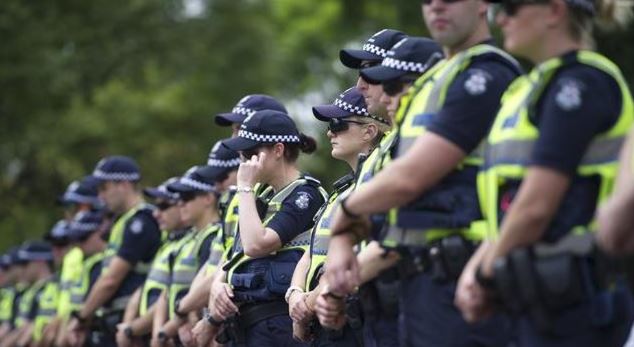
PROACTIVE – REACTIVE – BROKEN WINDOWS – ZERO TOLERANCE
Speaking with police to try to understand the application of Proactive, Reactive, Broken Windows, or Zero tolerance policing philosophies really depends on which Police member you speak with. They will all have knowledge or an opinion, but the confusion starts when it comes to examples.
Adding to the confusion, the CAA has spoken to many senior Police, and even they can’t agree or have little understanding of the concepts, so what hope has the Constable on the street have of implementing a coherent Policing philosophy for Victoria’s Force?
On this front, the chances of the public knowing are next to zilch.
Put simply, proactive policing prevents crime, while reactive policing deals with crimes already committed.
Proactive policing
Proactive policing is often maligned and misunderstood, seen by many as the soft option and ineffective by avoiding the harsh reality of policing.
Arguably the most effective method of Policing, it cannot be successful without a Reactive function in support, not the other way around.
The assumption that Proactive policing is avoiding arrests is a long way from the reality of a good proactive strategy. A far better policing approach is needed, given the reluctance of courts to manage recidivists adequately.
The best way to understand the Proactive reactive dilemma is through examples.
One proactive strategy is instigating Police patrols in the community, which are frequent but unpredictable and highly visible. They must be conducted so that the community can become accustomed to the Police presence and can rely on the presence to become part of the community fabric. While 24-hour patrols would be challenging to manage, having frequent patrols on multiple days every week would improve community confidence. This is where proactive policing is most effective – preventing crime before it happens.
Amongst the best examples of proactive projects were the formal Police In Schools Program (PSIP), Operation New Start and the Blue Light Disco. Frontline police developed the latter two and were not top-down initiatives, which added to their success. To deal with particular children, the three initiatives work together: Operation New Start working with the local Police member in the PSIP program to ensure the child gets to school, and Blue Light providing the child with entertainment and, if necessary, funding the child’s education.
There are a plethora of other examples ranging from working and building positive relationships with children of the next generation susceptible to unlawful behaviours to forms of communication with the community to reinforce compliance with the law as opposed to the vast majority of police resources applied to the reactive function where the police are isolated from the general public, either ensconced in vehicles (many with tinted windows) or police stations. There has been a substantial reduction in Police Station opening hours, and those that are open are neither welcoming nor convenient for the public, as security has been so overdone as to take the human factor out of Police Station interactions.
As history shows, the risk to police in a Police Station is extremely low, and the security should be commensurate with the risk.
Because the security levels are not commensurate with the risks, they adversely impact Service delivery, making it a chore to try to report a crime to a local Police Station. People are encouraged to report crime on the Police Advice line 113444- service efficiency at the cost-of-service delivery.
The phoned-in crime report has to be handled multiple times rather than the police member to whom the crime is reported at a Police Station taking responsibility for investigating the crime; the centralised reporting is inefficient writ large.
Reactive Policing
A reactive vehicle or foot patrol responds to a perceived or known threat to the community. It is usually targeted at a specific criminal or anti-social activity and is maintained until that threat is passed.
It is often spasmodic but fails to imbue confidence in the community over a more extended period.
We are not suggesting that reactive patrols are unimportant because they are sometimes essential, but not at the expense of proactive community patrols.
Of the Reactive strategies, probably the most contentious is the proliferation of Task Forces and special duties units, which, by design, are clearly Reactive because some criminal event/s motivates their creation and determines their function.
We were shocked to hear one of Victoria’s most senior executives claim that task forces are proactive and absolute rubbish.
Task Forces have an essential role to play, and there will always be a need for a number, but the reality in Policing in Victoria over the last decade or so is that inept leaders have automatically opted for a Task Force to solve the operational problems they face with little thought to the impact on the overall policing by removing police from the front line to fill the Task Force positions.
There seems to be a belief in the upper echelons of the Force that on most high-profile issues, where the community demands to see action, the most visible (and most straightforward) to quell community disquiet is to establish a Task Force.
A police pragmatist would see the Task Force approach, in many, but not all cases, as an inefficient use of police resources; a better approach would be to reduce crime from happening in the first place by maintaining an adequate number of Police on the front line.
Front-line members at the various Police Stations and Criminal Investigation Units providing face-to-face Police service to the community should be untouchable for other duties, not the first point of call.
Another problem with task forces is that they have no sunset clause, so they can run on for years and, in many cases, allow prime targets to continue their criminal activity uninterrupted. Targeting a crook to charge them with more serious crimes, or the equivalent of police nirvana, is sometimes ridiculous when prosecuting lesser offences more frequently will achieve a better outcome than THE BIG ONE.
The proactive patrols will still catch and charge perpetrators.
Broken Window Theory
A lot has been written about the Broken Windows policing philosophy, which was made famous because of its effectiveness in reducing crime in New York some years ago. The theory is as relevant today as it was when it was used in the US.
This approach has police intervening in all levels of social disorder and crime, and rather than drive or walk past anti-social behaviour; the police must intervene and, where an offence has been committed, charge the perpetrator and leave the Court to resolve the matter.
In criminology, the broken windows theory states that visible signs of crime, antisocial behaviour and civil disorder create an urban environment that encourages further crime and disorder, including serious crimes.[1] The theory suggests that policing methods that target minor crimes, such as vandalism, loitering, public drinking and fare evasion, help to create an atmosphere of order and lawfulness
https://en.wikipedia.org/wiki/Broken_windows_theory
James Q. Wilson and George L. Kelling first introduced the broken windows theory in an article titled “Broken Windows” in the March 1982 issue of The Atlantic Monthly:
The role of police management is critical, liaising with the appropriate authorities to keep on top of the visible signs of crime and antisocial behaviour brought to their attention by Police on the streets.
An argument that the Courts couldn’t handle an influx of minor offences is not a police problem. However, a Constable always has the discretion to issue a warning and should have the power to issue a notice to an offender to receive an official warning at a Police Station, irrespective of age. Failure to participate would automatically see the summonses or a Court Attendance Notice issued for the alleged indiscretion.
Zero Tolerance Philosophy
Of all the theories of Policing that are touted, this is one that we vehemently reject predominantly because it removes the Common Law discretion that a sworn Police Constable has to prosecute or not.
Without discretion, Police become robotic, void of compassion and their effectiveness would be severely diminished as the community would wholeheartedly reject this approach.
The CAA hopes that the new Chief Commissioner will rapidly bring the Force into balance between the Proactive and Reactive approaches, adjusting the pendulum to favour proactive policing by a small margin.
Making this change may be resisted by the uninformed, but it will be short-lived; as the adoption of proactive strategies starts to take effect, there will be positive reactions from the members. It does take a bit of time, but many of us have seen this before, as the conversion rate from reactive to proactive became a prominent strategy. The crime rate fell dramatically as the initiatives grew from the bottom up and started to have an effect.
To implement these philosophies, the Force needs to present an authoritative stance to the community, and we encourage the Chief Commissioner to dispense with the black (Salute Blue) uniform shirts allegedly designed to make the Force look tougher and return to the lighter blue shirts more consistent with other Australian police forces.
Reintroducing the compulsory wearing of the Police cap, the symbol of authority, will give the Force stature and rebuild respect in the Force.
A respected Force is an effective one.

